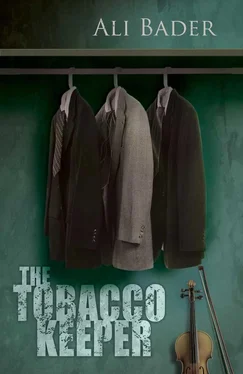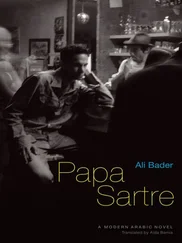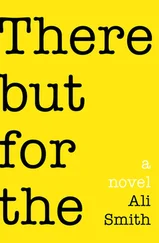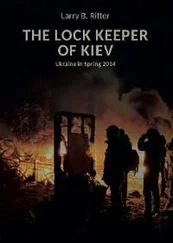Tehran’s winter was bitterly cold as he looked for somewhere to stay. He placed his hands in his pockets after wrapping the coat tightly around his body. Walking along the street, he saw two fat men in long coats tailing him. They had thick lips and stern eyes. He felt he was being watched by the Pasdar, the revolutionary guard. Nevertheless, he walked on quietly, observing the changes that had occurred in Iranian life, not only in the women’s clothes and the style of life in general, but in political posters too. This was a new feature of life, a kind of collective imagery represented in murals. High walls offered the perfect space for artists to display their graphic skills. It seemed to Haidar Salman that there wasn’t a single wall left without murals, posters or writing covering it. People were being mobilized through the use of ideological and political propaganda that depended on a minimal use of words to produce the maximum effect.
The Iran that he had known well had disappeared without a trace, replaced by a new Iran. The posters showed this clearly. Shia themes of traditional Pardeh-Khani narratives now completely dominated Iranian visual culture. Haidar Salman had seen those old images re-enacting the battle of Karbala since the fifties. Now they were everywhere in Tehran, even in the cafés. They represented epic themes in a primitive form, but were now used to embody the revolution. They combined the Pardeh graphics with new revolutionary propaganda. He later explained this to Farida as follows: ‘What’s happening in Iran seems to me to be a kind of Pardeh-Khani art, where a painter controls a large canvas of five feet by twelve. The painting depicts Karbala, a centuries-old battle in which Hussein, the Prophet Mohammad’s grandson, was killed. The painter begins his dynamic project by taking a large sheet of canvas stuck to the wall or hung between two poles. What he does then is to bring people by force into the circle of pain. Everything here is designed to drive you to tears …’
Haidar Salman realized that this artistic genre was the product of politics but also left a huge impact on it. This art proliferated on coins, stamps and school textbooks, although there was a brief honeymoon between religious groups, on the one hand, and progressive and institutional forces, on the other. Soon enough, Islamic ideologies launched a campaign to reclaim and appropriate the revolution. They organized an army of primitivist and religious artists to mobilize people and defeat their rivals and opponents through visual art.
Only Hotel Azadi remained from the old Tehran. When Haidar walked down Evine Street, he stopped at the hotel. A concierge stood in front of the door in his elegant outfit. Haidar had stayed at this hotel with Tahira during their honeymoon. They’d taken a large suite with windows looking out over the mountains from one side. On the other side, the windows looked over the city. The suite had a small sitting room with a table in the corner. In the evening, they dined in the panoramic restaurant on the upper floor with a view of the whole city.
What would Haidar Salman do now? I managed to locate everyone that Orhan suggested, especially Dr Khisro. Haidar had known Dr Khisro for a while and would sit with him at Naderi café in Wali al-Asr Street. Everybody confirmed, too, that he’d been involved in a relationship with a girl called Pari. They also suggested that he’d escaped to Syria, either directly or through Turkey, with the help of Farrah Nikdahar and Hassan Qazlaji. So who were all these people and how did he get to know them?
First, who was Pari? What kind of relationship did he have with her? And how did he make her acquaintance?
The Pari story actually goes back a long time and cannot be told here. But we can trace the relationship as far as her father Mohammad Taqi, who worked as an accountant for Ismail al-Tabtabaei in Tehran. Haidar Salman had made his acquaintance before Ismail liquidated all his assets in Tehran. At any rate, Haidar, who no longer had any acquaintances in Tehran, felt that Mohammad Taqi was the only person he could turn to. The revolution had produced drastic changes in lifestyle and in the class system, which had driven most of his father-in-law’s acquaintances to emigrate to Europe. He realized that only the poor stayed behind, whatever the changes, revolutions and coups.
Mohammad Taqi lived in the Hazrat Hussein neighbourhood, the area closest to Hussein Square. On the afternoon of Haidar’s arrival in Tehran, he felt hungry and miserably cold, so he took the bus from Revolution Avenue and told the driver that he wanted to get off at the point closest to Hazrat Hussein. After about a quarter of an hour, the driver, with his thick moustache and hat, signalled for him to get off. Haidar found himself in front of a number of small shops with high metal shutters. In between was a narrow, paved street that led to a poor neighbourhood. He stopped briefly and took a cigarette out of his pocket, lit it and blew smoke into the air. He walked beside thick wooded gardens that lay in front of a group of houses. He saw a casually veiled young woman in her twenties wearing jeans and standing at the door of a small, two-storey house with a beautiful ceramic façade. He stopped and asked her about Mohammad Taqi’s house. She looked up at him with startled large dark eyes, and told him that this was her house and that Mohammad Taqi was her father.
The young woman spoke a little Arabic and his own Persian was adequate for basic communication. The girl asked him to follow her. With quiet nervousness he obeyed, passing by the screen that stood at the entrance of all Iranian houses to prevent evil spirits from entering. They followed a winding path across the small flower garden to a sunlit living room that was filled with the pale rays of the winter sun. The room was very warm, so he took off his coat and handed it to her. He sat on the sofa facing the girl with the large, dark eyes and fair-skinned, moon-like face. He waited for Mohammad Taqi to come home from his downtown shop on Gragh Barq Street in Tobkhana Square, also named Artillery Square, which became Khomeini Square after the revolution.
Pari disappeared briefly and came back with a cup of tea. He took the cup in both hands and began to drink. His clothes were very shabby, his beard long, his hair was falling onto his forehead and streaked with grey. The girl eyed him tenderly, thinking that his shabby clothes, pale face, exhausted, thoughtful eyes and melodious voice made him appear more handsome. She was as overwhelmed by his presence as she would have been by a prophet.
Almost an hour later, Mohammad Taqi came home. He was a tall man with a slight stoop. His old clothes were ironed and his hair was completely grey. Before Haidar Salman could shake his hand, Mohammad Taqi embraced him. He’d known Haidar since the latter had met Tahira. Mohammad Taqi was one of the people whom Ismail al-Tabtabaei depended on in his work in Tehran and who had looked after Tahira when she was a little girl.
Everyone we met confirmed that Haidar Salman had lived in Mohammad Taqi’s house in the Hazrat Hussein neighbourhood and gone with him to work every morning in Gragh Barq, where he’d watch the passers-by and customers that came to the shop. At Mohammad Taqi’s house, he’d started relearning Persian with the help of his daughter, Pari. Did Haidar and Pari’s relationship become formal? Nobody really knew much about the nature of their relationship. Other people were perhaps less curious than we were. Haidar Salman, however, wrote about it in some detail.
Pari was twenty and had been divorced for two years from her husband. She had no children of her own and since her divorce had worked at a women’s hairdresser’s on Wali al-Asr Street. She used to spend the morning at the shop. On her return in the afternoon, she’d fling her handbag on the sofa and, in full view of her parents and sister, head straight upstairs to Haidar’s room. She would sit close beside him on the sofa, indifferent to everyone else. She was wildly, though quietly, happy to be with him and never tried to conceal her feelings. Her face radiated sweetness and docility as she sat in front of him and sang in Farsi. He listened to her with great joy. While she sat embroidering a linen sheet for him, he would watch every thrust of her needle. He would sometimes stand silently and look out of the window at the stars encircled by halos of trembling white light. As he stood there, his body was infused with a sweet, quiet power. He sensed Pari’s ripe, youthful body, and was aware of every part of it. He desired her legs, her waist, her arms, her neck and her full bosom, which pressed against the window as they stood together watching the trees in the garden.
Читать дальше












